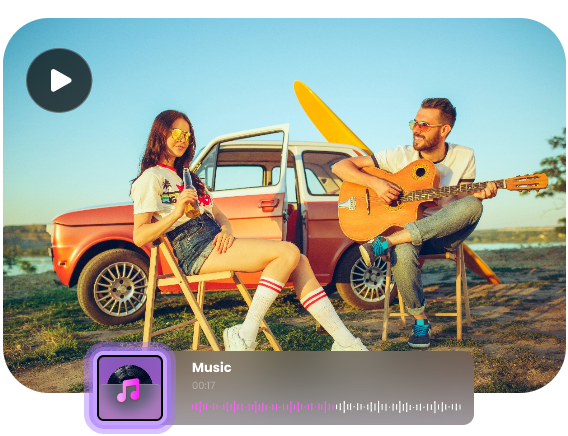Google Nano Banana: Odd Name, Serious Creative Edge Why Google Even Cares About a “Nano Banana” From Lab to Everyday Screens What You Can Do With Nano Banana A Quick Comparison The “AI Figure” Angle Why the Name Works in Its Favor Where It Could Go Next Why People Keep Talking About It Final Thoughts
Table of Contents
Google Nano Banana: Odd Name, Serious Creative Edge
When you first hear Google Nano Banana, you might think it sounds like some joke project hidden inside a tech lab. A banana? Really? But behind the playful name is something that is slowly becoming one of the most interesting tools in creative tech. Unlike many platforms that pop up and disappear, Nano Banana is tied to Google’s AI research roots, which explains why it already feels a step ahead.
Most people first stumble on it through the official Google nano banana AI site, where demos show how sketches, doodles, or even a short text prompt can turn into AI figures that look surprisingly polished. It’s not another random image generator. It’s more like a bridge between imagination and something you can actually hold, share, or even print.
It’s worth asking: why would a tech giant like Google put resources into something with such a quirky name? The answer sits in how people are using digital creativity today.
Traditionally, if you wanted to turn an idea into a figure—say a character sketch or a product mockup—you’d open Photoshop, Blender, or Maya. Hours later, if you had the skills, you might end up with something close to what you imagined. If you didn’t? Well, your idea would stay on paper.
Google’s bet with Nano Banana AI is that people shouldn’t need years of training just to see their ideas come to life. That’s why the platform focuses on:
Accessibility – no steep learning curve.
Speed – figures appear in minutes, not days.
Quality – outputs don’t look like cheap filters, they look like carefully built miniatures.
This is where the name makes sense. Just like a banana is small but packed with energy, Nano Banana feels playful on the outside but hides some heavy research muscle underneath.
The connection to Google isn’t just branding. A lot of the underlying AI that powers Google Nano Banana comes from years of image synthesis and model training research. What makes it different from earlier projects is the focus on figures and tangible outputs.
Think of it this way: plenty of AI models can make random pictures. But very few can make consistent AI figures—characters that look three-dimensional, stylized, and repeatable across variations. That’s where Nano Banana has quietly separated itself.
Regular AI tools: great for backgrounds, abstract visuals.
Nano Banana AI: great for characters, dolls, collectibles, and mockups that look physical.
It’s a small shift, but for designers and hobbyists, it changes everything.
Instead of giving the same tired list of “features,” let’s look at real scenarios people are playing with:
Artists upload sketches and watch them turn into refined characters.
Game developers use it for early prototypes, saving weeks of modeling.
Collectors experiment with AI figures that feel personal, not mass-produced.
Content creators whip up eye-catching visuals for streams and posts.
The tool isn’t limited to one industry. It feels more like a creative playground where ideas don’t get stuck in the “what if” stage.
Sometimes it helps to stack Nano Banana against the old way of doing things:
This doesn’t mean Nano Banana replaces professional tools—it just lowers the wall so more people can start creating.
One of the buzzwords around nano banana AI is AI figure. Unlike standard image generators that give you a flat picture, Nano Banana leans toward outputs that look sculpted, like they could exist in 3D.
That’s why you’ll often see people sharing dolls, chibi-style characters, or miniature collectibles made with it. The platform doesn’t just spit out a drawing. It creates something that feels like a figure waiting to be placed on a shelf—or uploaded into a game engine.
This is one of the biggest reasons it’s getting attention from both hobbyists and professionals. It closes the gap between “imagination” and “object.”
Here’s the funny part: the name Nano Banana sounds so unserious that it ends up being memorable. People click on it out of curiosity, and then realize it’s actually doing something meaningful for digital design.
A name that makes you smile.
A tool that makes your ideas real.
A brand that doesn’t feel intimidating, even though it’s backed by Google’s AI research.
That mix of playfulness and depth is rare in creative tech.
Right now, Nano Banana is best known for quick, polished AI figures. But if you look at Google’s track record, there’s no way it stops there. The foundation is strong enough to branch into:
Animation – taking static figures and making them move.
AR/VR – models ready for immersive environments.
E-commerce – instant product mockups for online shops.
3D printing – exporting figures you can physically hold.
If even half of these directions become reality, Nano Banana could shift from being a “fun creative tool” into something far bigger.
Every creative platform has its moment, but Nano Banana is sticking because it does three things really well:
It simplifies creation without dumbing it down.
It delivers results that look good right away.
It invites playfulness, not stress.
That’s a rare mix. Most creative software feels either intimidating or gimmicky. Nano Banana manages to avoid both.
Google Nano Banana may sound like a joke at first, but the tool is no joke. It is giving people more ways to create, whether that is quick doodles turned into figures, product mockups, or full-on AI companion images. The goal is not to push artists aside but to make the door wider so more people can try their hand at creating.
What makes it different is how it manages to feel light and playful while still packing real power. A lot of tools lean too hard in one direction, but this one finds a sweet spot. The funny name almost fits—it is small, kind of silly, but carries more weight than you expect.




Want to add a comment?